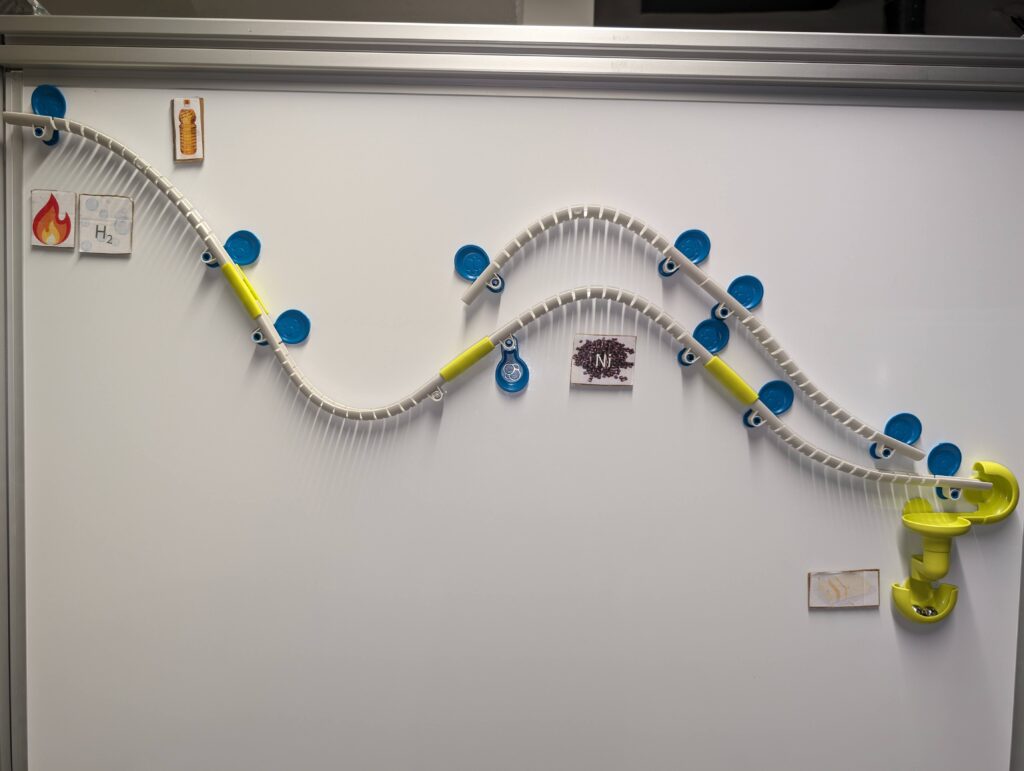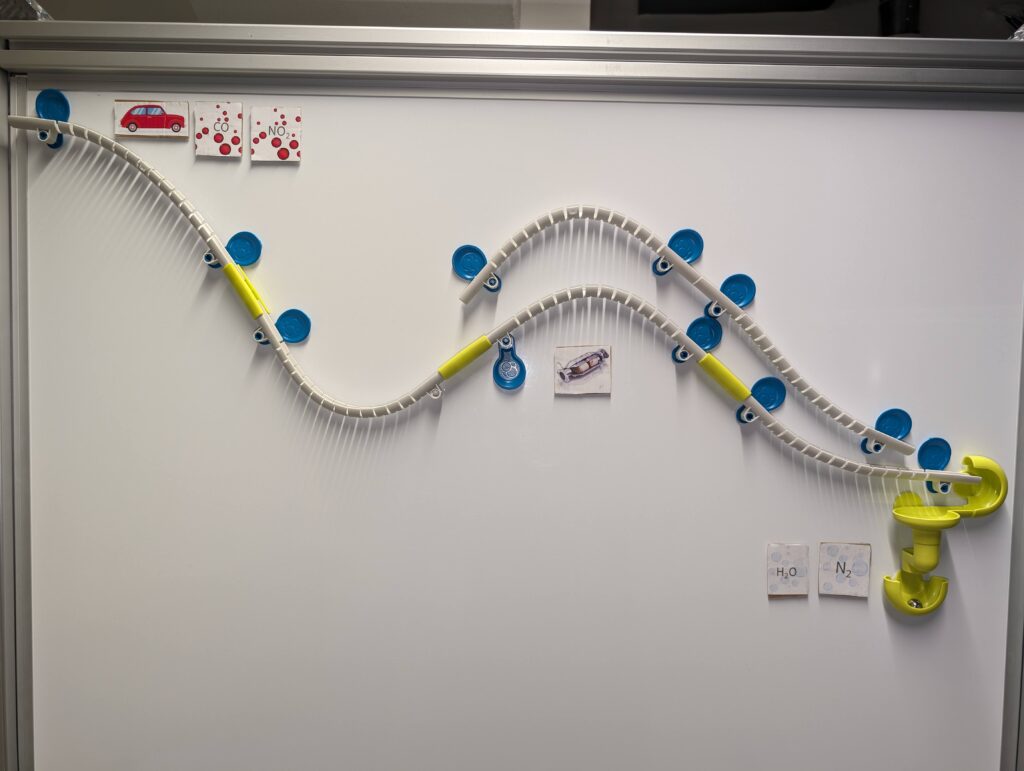In this exhibit, we show how a chemical reaction works with the help of a simple marble run. For a chemical reaction to happen the reactants need to have enough energy to cross the energy barrier. To start a reaction we need to give it some kind of energy mostly its heating, so the reactants are at a higher energy level and cross an energy barrier, after crossing that barrier the reaction occurs, and the products are made.
However, this is not always the case because the energy barrier is mostly too high.
To overcome the high energy barrier we need to give more energy to start the reaction and in most cases, this is not feasible. This is where a catalyst is used. A catalyst can reduce the energy barrier by giving an alternate path
Following are the daily-life examples of catalysis:
Hydrogenation of oil:
To produce marmalade the vegetable oil is heated in the presence of hydrogen gas and nickel is used as a catalyst.

Production of yogurt:
Culture bacteria turn milk into yogurt.

Car catalyst:
It is made up of Platinum, Palladium and Rhodium. It converts lethal gases like carbon monoxide and nitrogen dioxide into harmless gasses like nitrogen and water vapors.
